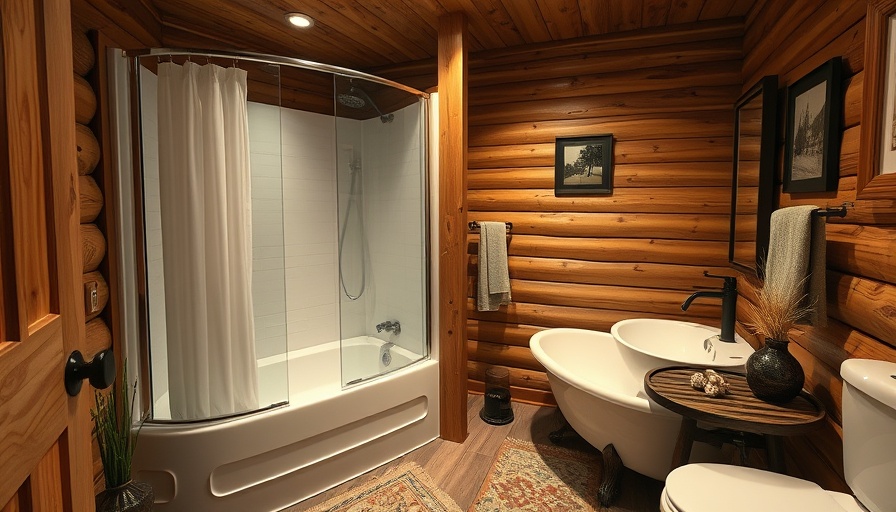
Unlocking the Joy of Indoor Gardening: Starting Seeds Successfully
For California homeowners interested in gardening, starting seeds indoors offers an incredible opportunity to cultivate a vibrant home garden, even in the non-growing season. With the right guidance and a thoughtful approach, anyone can nurture a green thumb. Not only is it fulfilling, but growing from seed allows you to control the quality and variety of the plants you want to cultivate, reflecting your personal taste and dietary needs.
Why Start Seeds Indoors?
Starting seeds indoors enables growers to extend their gardening season and establish stronger plants than those purchased at stores. It allows you to jumpstart your vegetable garden, providing the perfect conditions for germination and growth. In California's mild climate, this practice aligns perfectly with the area’s gardening culture, merging practicality with the enjoyment of nurturing plants.
Preparation is Key: What to Consider Before Planting
Before embarking on your indoor seed-starting journey, it's crucial to plan and understand several fundamental components:
- **USDA Plant Hardiness Zone**: Familiarize yourself with your area's hardiness zone to choose plants that will thrive. The USDA Plant Hardiness Zone Map can help you select seeds that fit well in California’s varied microclimates.
- **Time Commitment**: Be aware that seedlings take anywhere from six weeks to three months to be ready for transplanting, requiring regular care. If you plan a vacation, ensure you have support or integrated timers for lights and automatic watering systems.
- **Costs**: Seeds are wallet-friendly compared to purchasing seedlings from the nursery, but investing in grow lights, soil, and other equipment can add up. The financial balance between costs and benefits should guide your initial investment.
Starting with Herbs: A Beginner's Approach
Herbs are often the best starting point for novice gardeners. They are manageable, grow quickly, and add instant flavor to your cooking. Think of basil, parsley, or cilantro; their compact size makes them ideal for indoor gardening. Getting accustomed to the seed-starting process with easy-to-care-for herbs builds confidence for more advanced projects down the line.
Choosing the Right Seeds: Your Options
While many seeds are suitable for indoor starting, a few favorites include beefsteak and cherry tomatoes. Each variety presents its rewards—beefsteaks boast larger fruit ideal for sauces, while cherry tomatoes are sweet and perfect for snacking. Recognizing the different needs for germination and growth between varieties helps in successful planting.
Essential Tips for Successful Germination
Once you’ve chosen your seeds and prepared your growing environment, focus on these vital elements:
- **Light**: Ensure your plants receive at least 12-16 hours of light per day. Grow lights can supplement natural sunlight, especially in winter months.
- **Watering**: Over-watering is a common mistake; ensure your potting soil is moist but not soggy. A moisture meter can be helpful in monitoring soil hydration.
- **Temperature**: Most seeds prefer a warmer environment to germinate, typically between 70°F to 75°F. Seed trays can be placed on heat mats to maintain optimal temperatures.
The Miracle of Seed Saving
One of the most rewarding aspects of starting seeds indoors is the practice of seed saving. As your plants mature and produce fruit, collect seeds to use for future growth. This not only reinforces self-sufficiency but also results in a familiar and rewarding gardening cycle—creating a deeper connection with plants and the process of growing them.
Future Trends: Evolving Indoor Gardening Practices
The growing interest in indoor gardening aligns with trends towards sustainability, self-reliance, and fresh consumption. More people are recognizing the benefits of growing their food indoors, particularly in urban environments where outdoor space is limited. The advent of vertical gardening and hydroponic systems further enhances these opportunities, allowing urban dwellers to enjoy fresher produce year-round.
Conclusion: Cultivating Your Green Thumb
Starting seeds indoors can transform your living space into a sanctuary of growth, flavor, and sustainable living. As you embark on this green adventure, remember to tailor your approach to your resources and limitations, ensuring you find joy in nurturing each seed into a thriving plant. Explore methods that resonate with you, and let your indoor garden flourish! For more guidance and tips, check your local gardening resources and communities.
 Add Row
Add Row  Add
Add 




Write A Comment